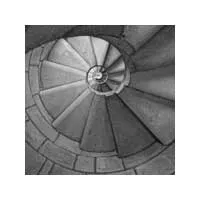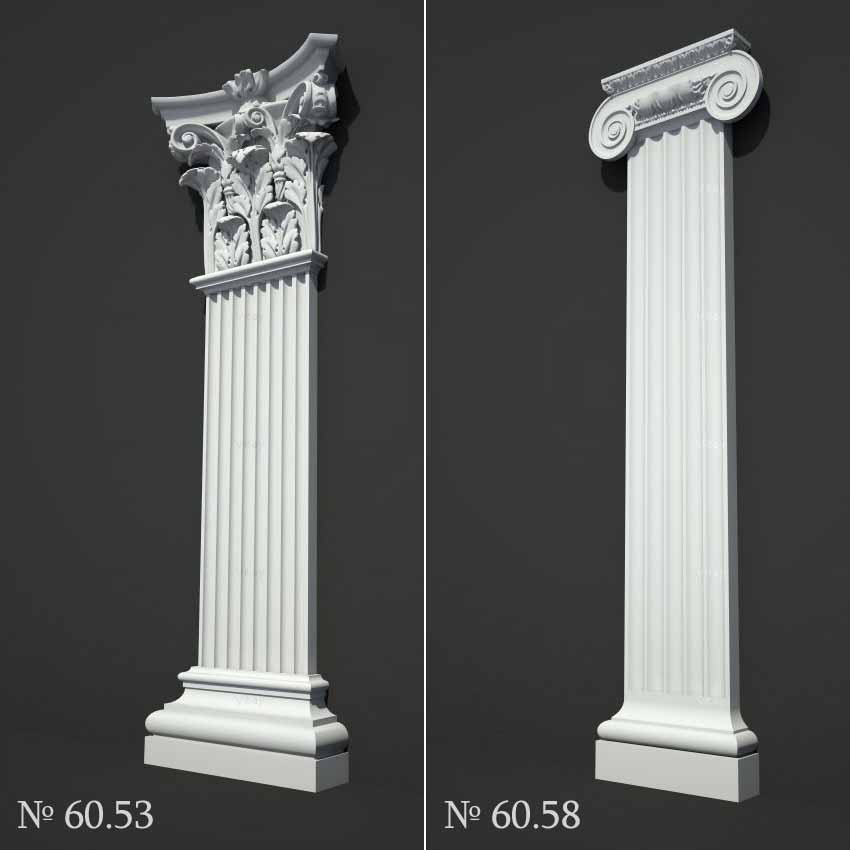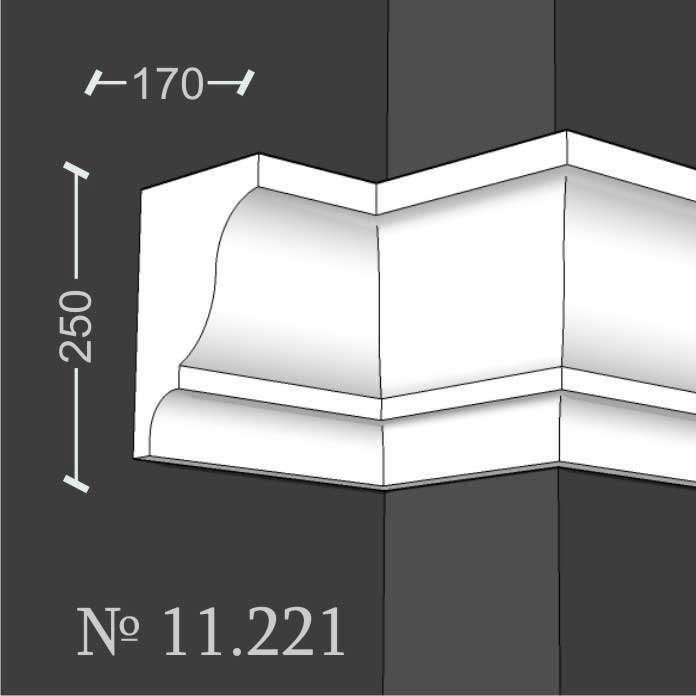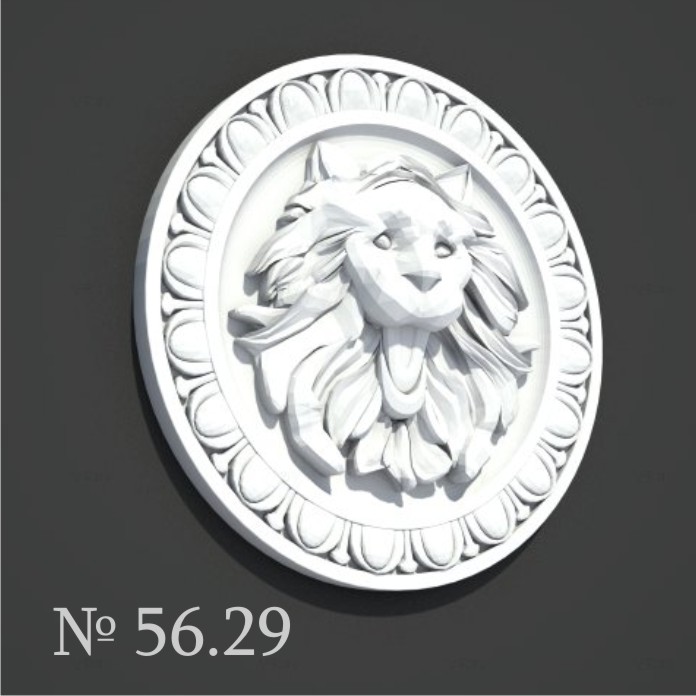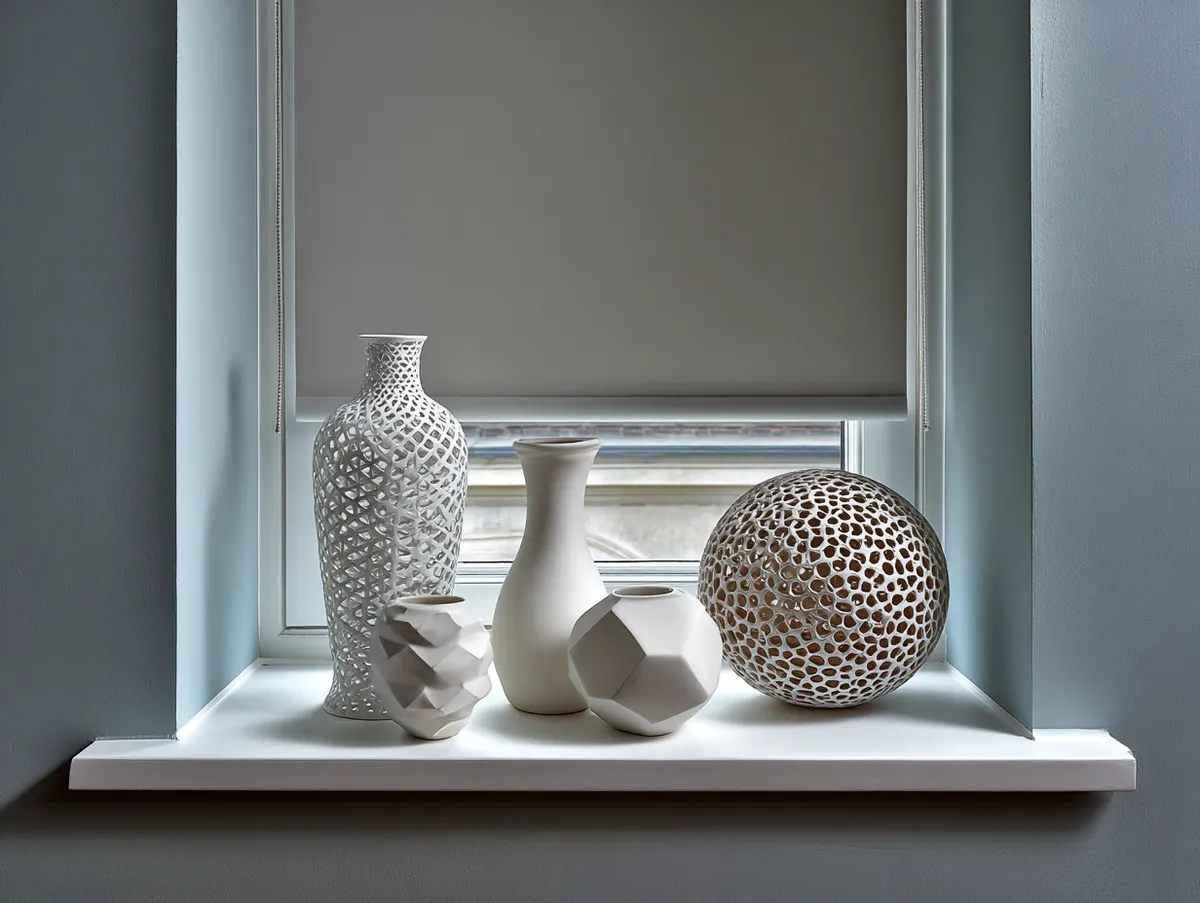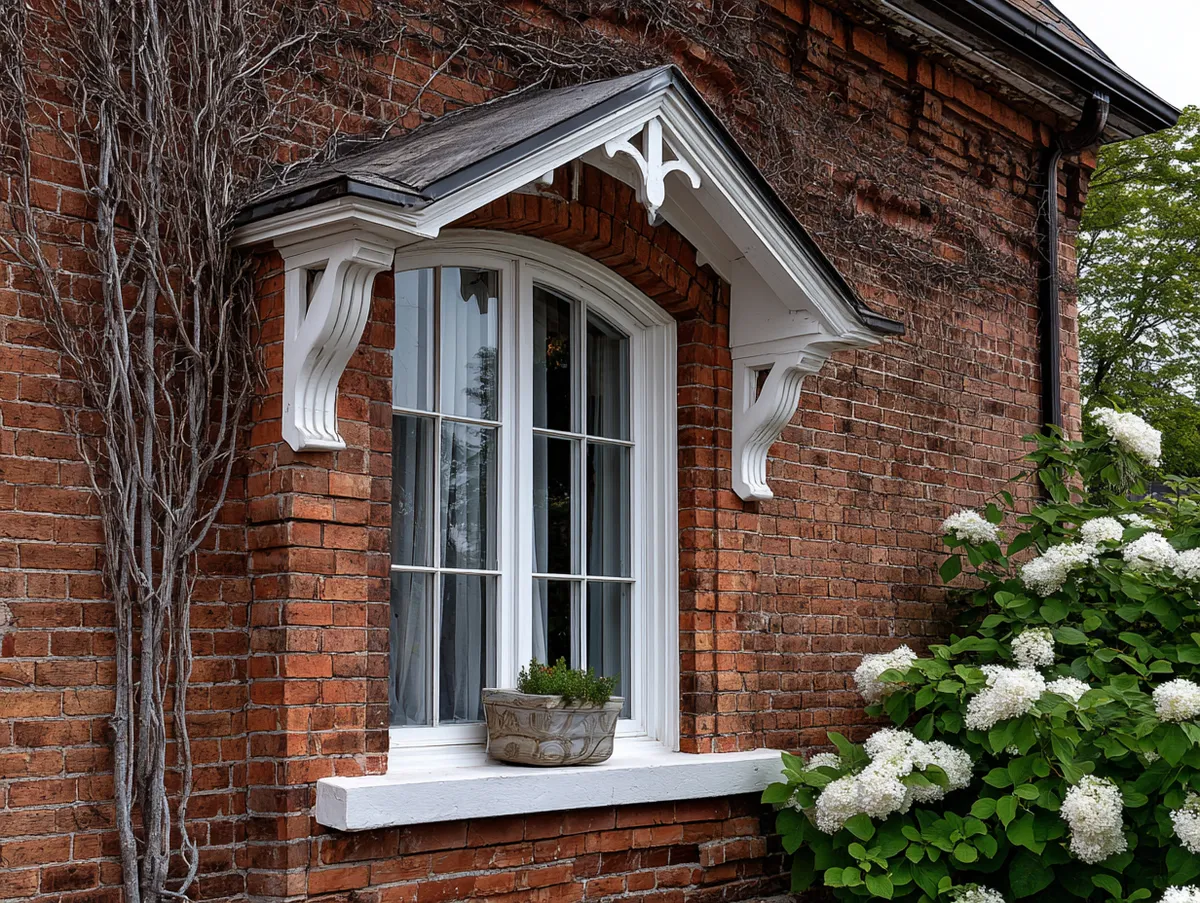Colonial window trim exterior is a timeless architectural detail that can significantly enhance a home’s visual appeal. Its unique combination of elegance, symmetry, and depth adds a layer of refinement to any structure. This article explores three diverse homes – a Colonial Revival house, a modern dwelling, and a quaint cottage – all beautifully augmented by the use of colonial window trim on their exteriors.
Modern Interpretation of Colonial Window Trim Exterior
In the image, the colonial window trim stands out due to its color contrast against the minimalist house façade. The bold, dark color of the trim provides an eye-catching contrast, drawing the eye to the windows and emphasizing the home’s architectural elements.
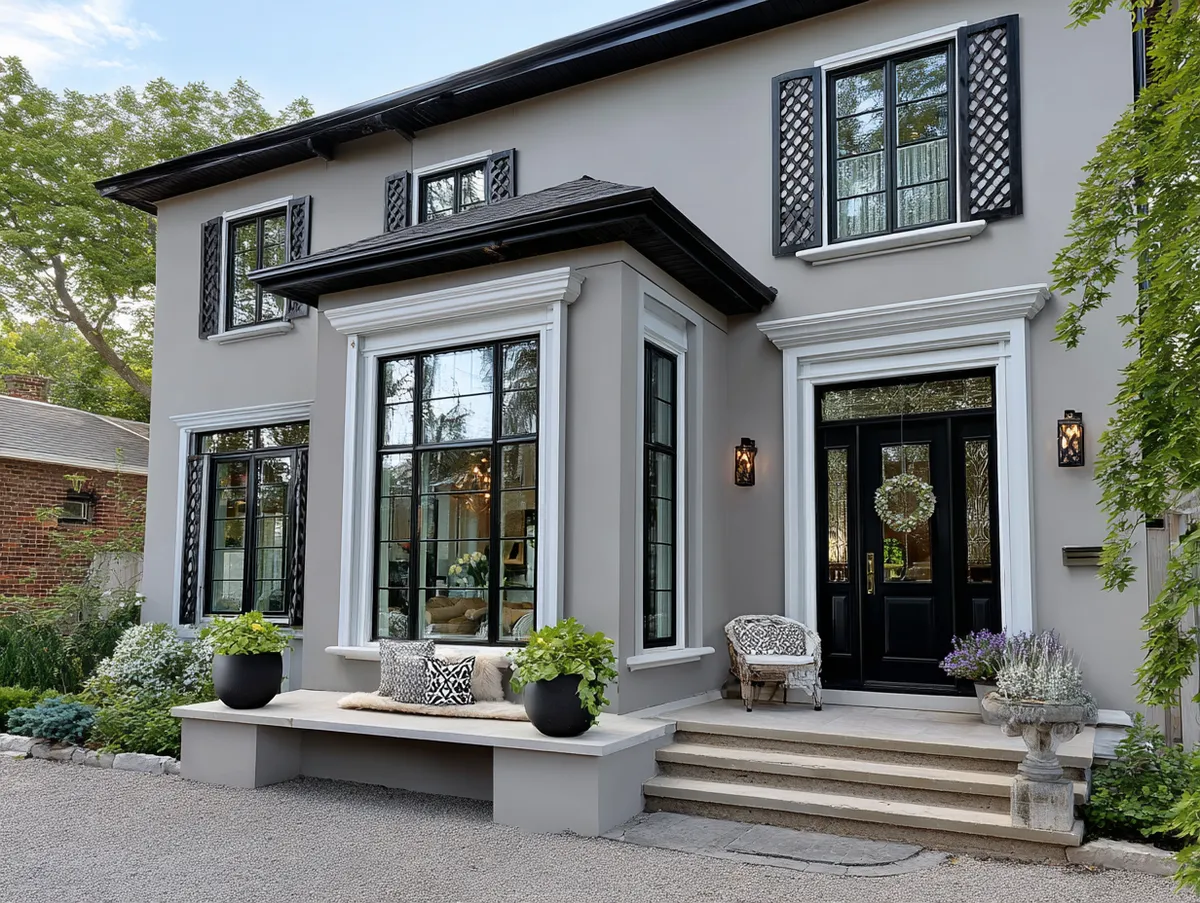
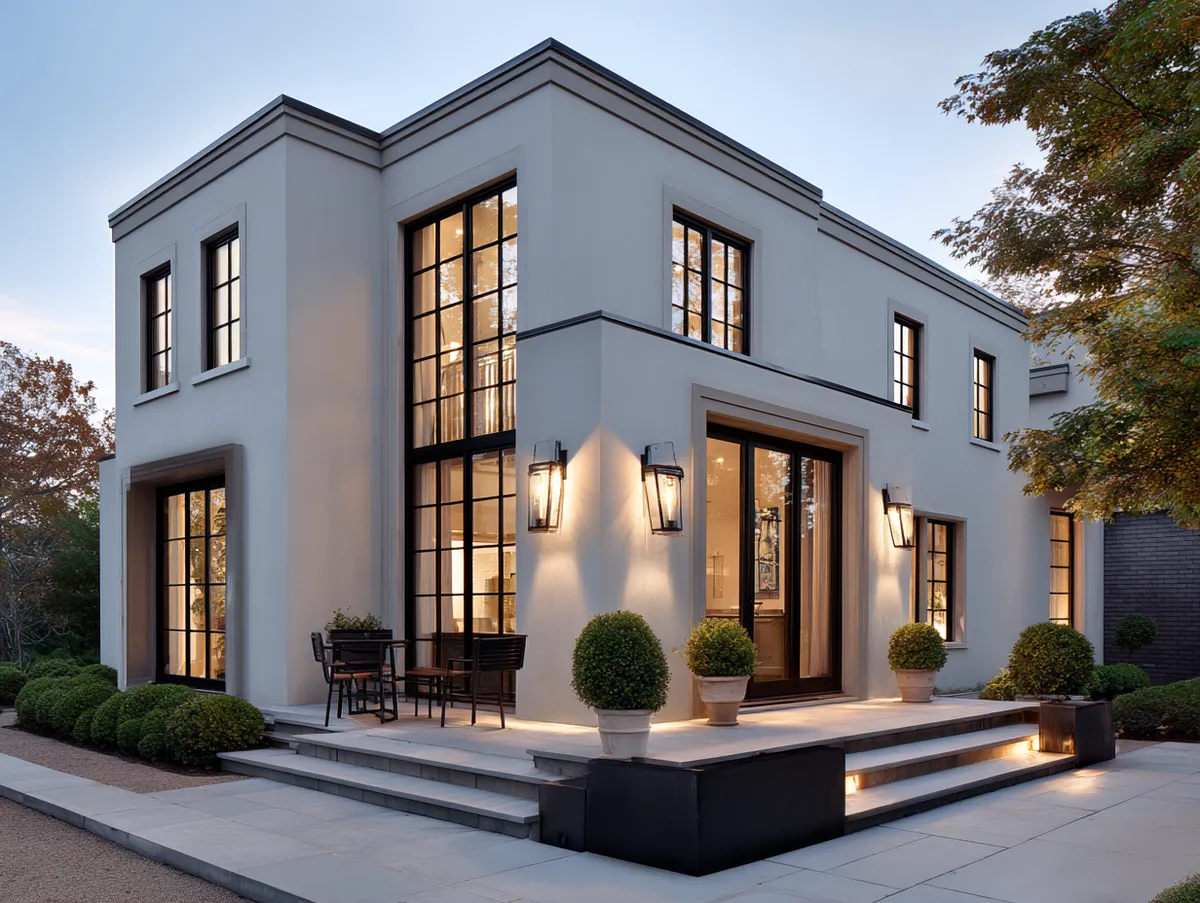
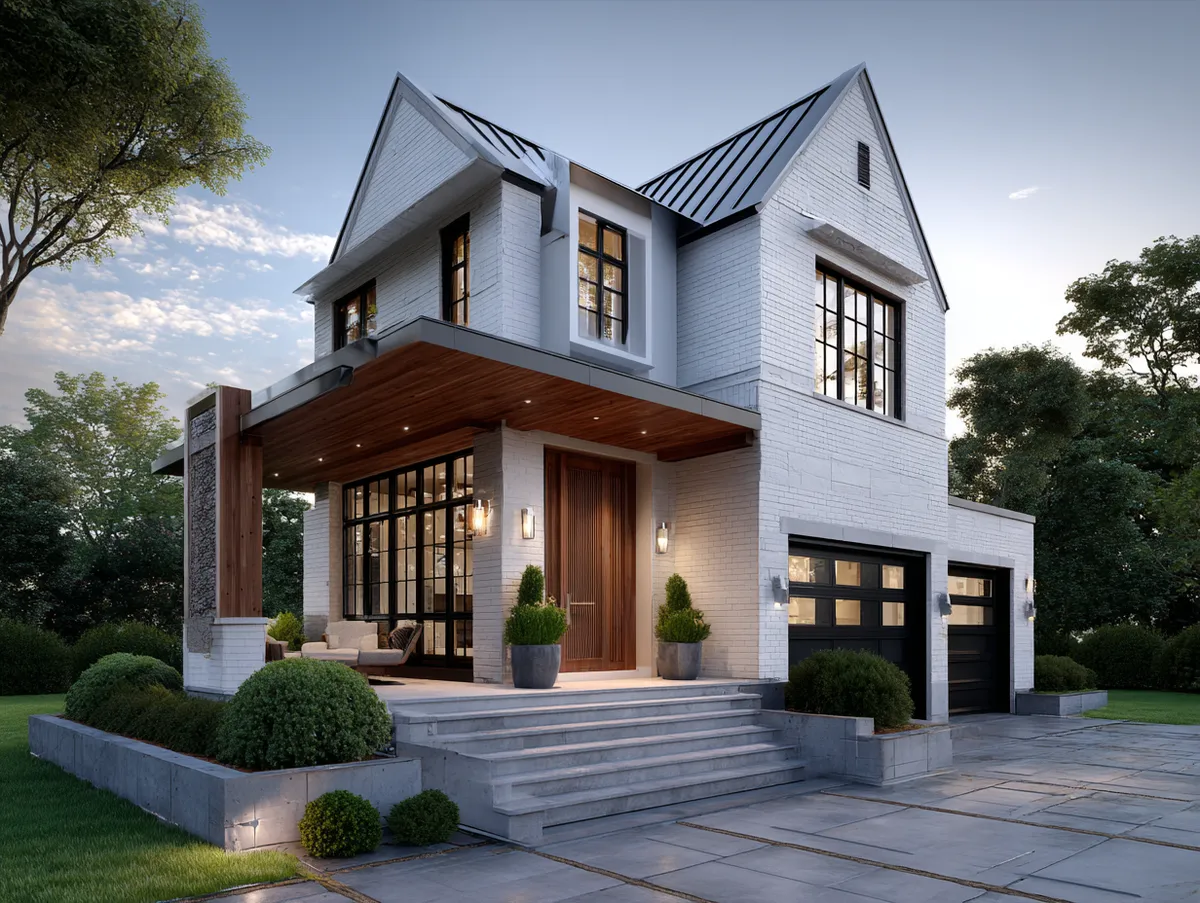
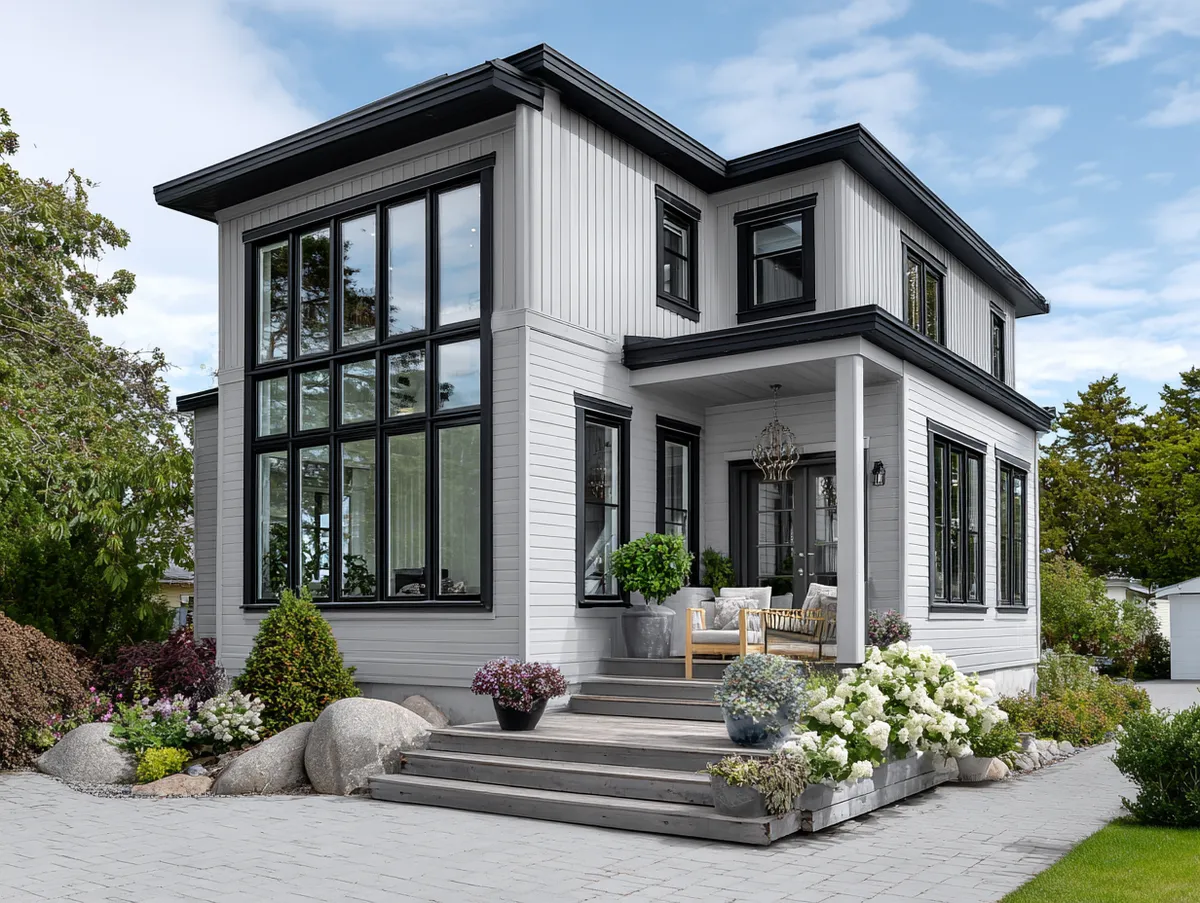




The photo also illustrates the versatility of colonial window trim in terms of material choices. In this modern interpretation, the trim appears to be made of a material resistant to weathering and decay, showcasing how traditional design can meet modern construction standards.
The image further demonstrates the role of colonial window trim in creating symmetry and balance in a home’s design. Despite the modern build, the uniform window trim adds a sense of harmony and proportion to the house, a principle carried forward from colonial architecture.
Furthermore, the photo highlights how the colonial window trim exterior complements other design elements in the home. The trim’s detailing mirrors the house’s overall architectural theme, contributing to a cohesive and visually appealing exterior.
Lastly, the image emphasizes the enhanced curb appeal provided by the colonial window trim. The trim not only heightens the aesthetic value of the house but also makes it more distinctive and attractive, adding significant value to the property.
A Colonial Revival with Charming Window Trim Exterior
At a closer look, the window trim’s intricate design comes into focus. Each element – the broad, flat casing, the header’s crown molding, and the slightly protruding sill – work harmoniously together to create an ornate framing that is reminiscent of the architecture of the American colonial era.
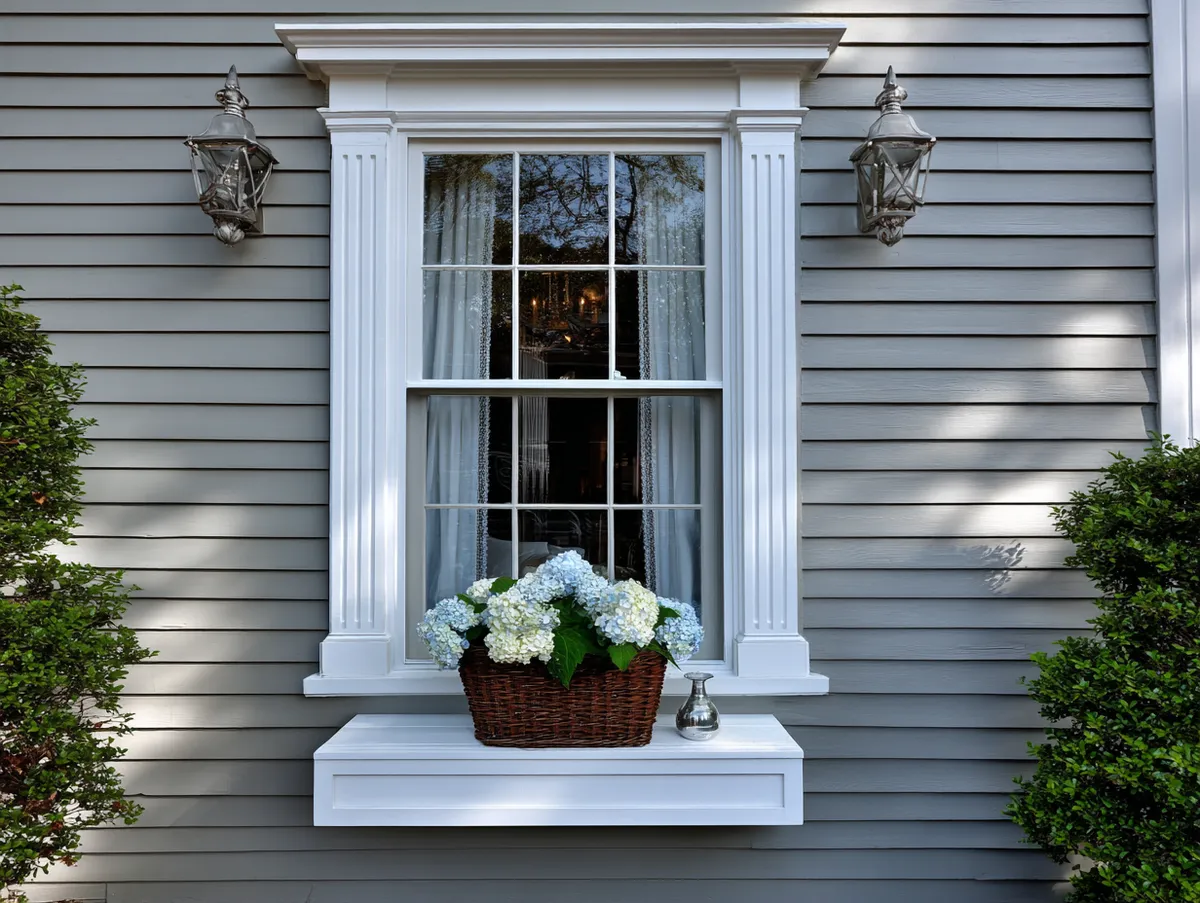

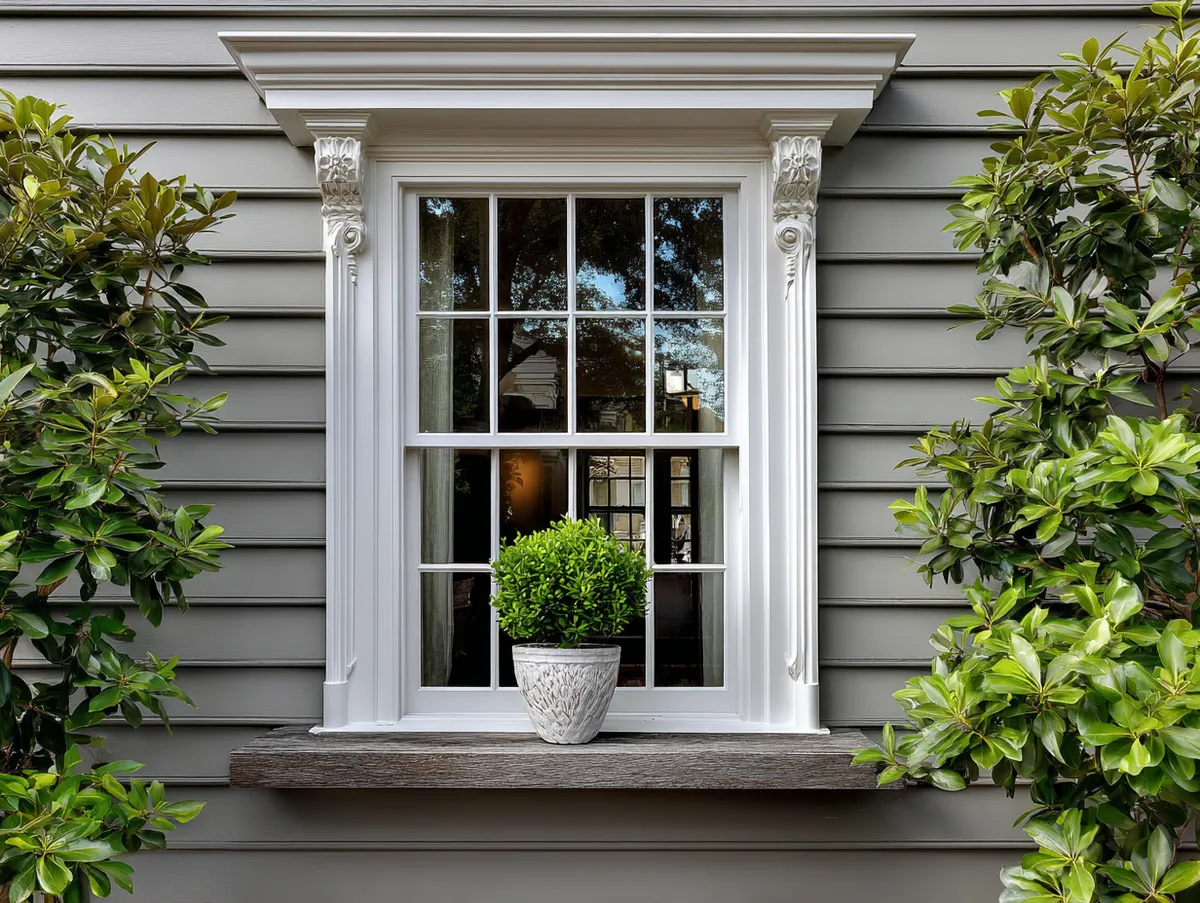
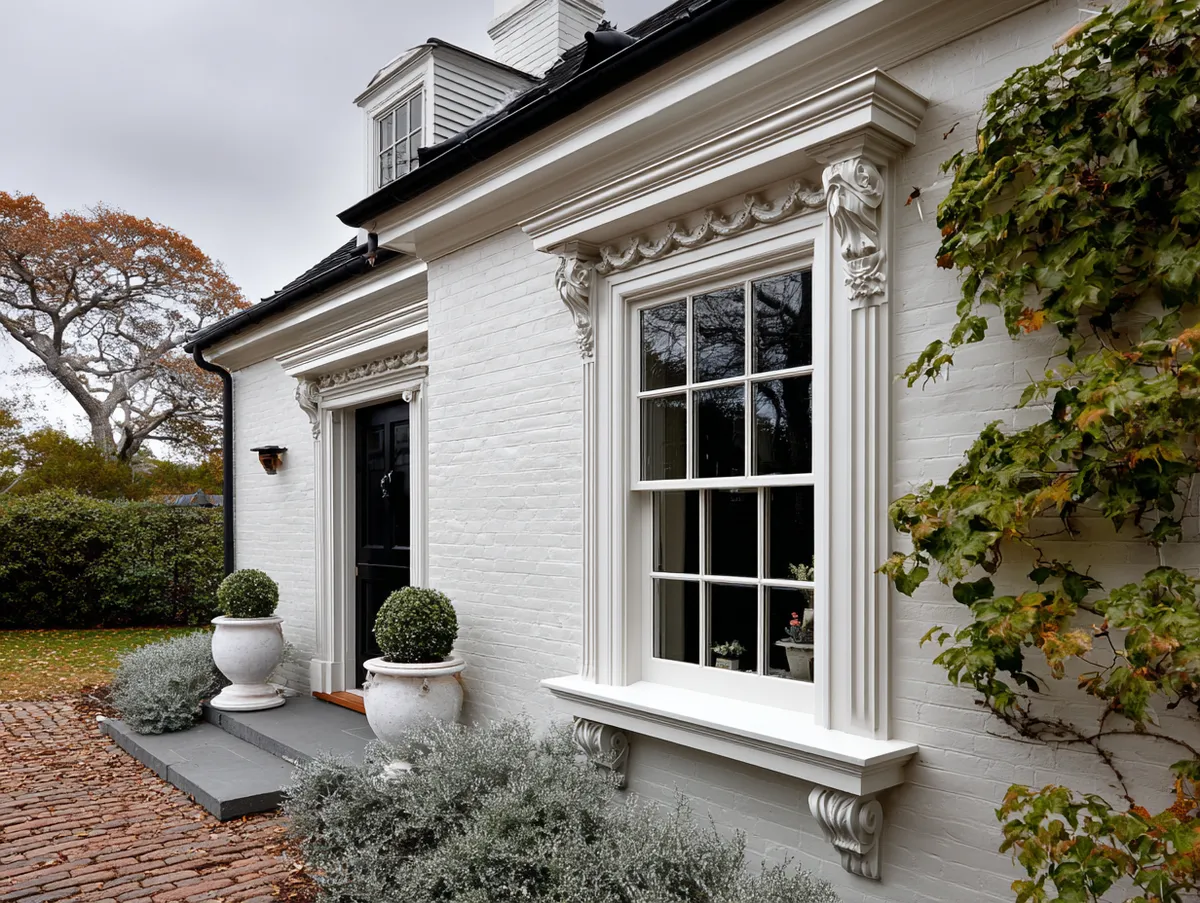




The photo also highlights the contrast between the white window trim and the house’s darker paint. This stark contrast draws attention to the windows, enhancing the home’s overall architectural appeal. The windows become more than mere functional components, transforming into a key aspect of the home’s exterior design.
The image further showcases the window trim’s contribution to the home’s symmetry, a crucial element in colonial design. The matching trim around each window ensures a uniform, balanced look, reinforcing the structure’s stately elegance and lending it an undeniable curb appeal.
Moreover, the photo allows us to appreciate the craftsmanship that goes into the design and installation of colonial window trim. The precision, detail, and architectural knowledge required to create such a balanced and aesthetically pleasing result are evident and contribute to the home’s timeless charm.
Finally, the photo captures the way the colonial window trim exterior adds depth and texture to the home’s façade. The trim, projecting slightly from the surface, creates subtle shadows that contribute to a more visually engaging exterior, making it stand out amidst its surroundings.
Colonial Window Trim Exterior Adding Elegance to a Cottage
The third photo captures a charming cottage, its exterior enhanced by the addition of colonial window trim. This architectural detail introduces an element of sophistication to the otherwise simple and cozy design of the cottage, creating an intriguing visual dynamic.
In the image, the colonial window trim’s elaborate design is displayed, with its well-defined header, casing, and sill forming an elaborate frame around the windows. This level of detail adds depth and complexity to the cottage’s exterior, enhancing its visual appeal.
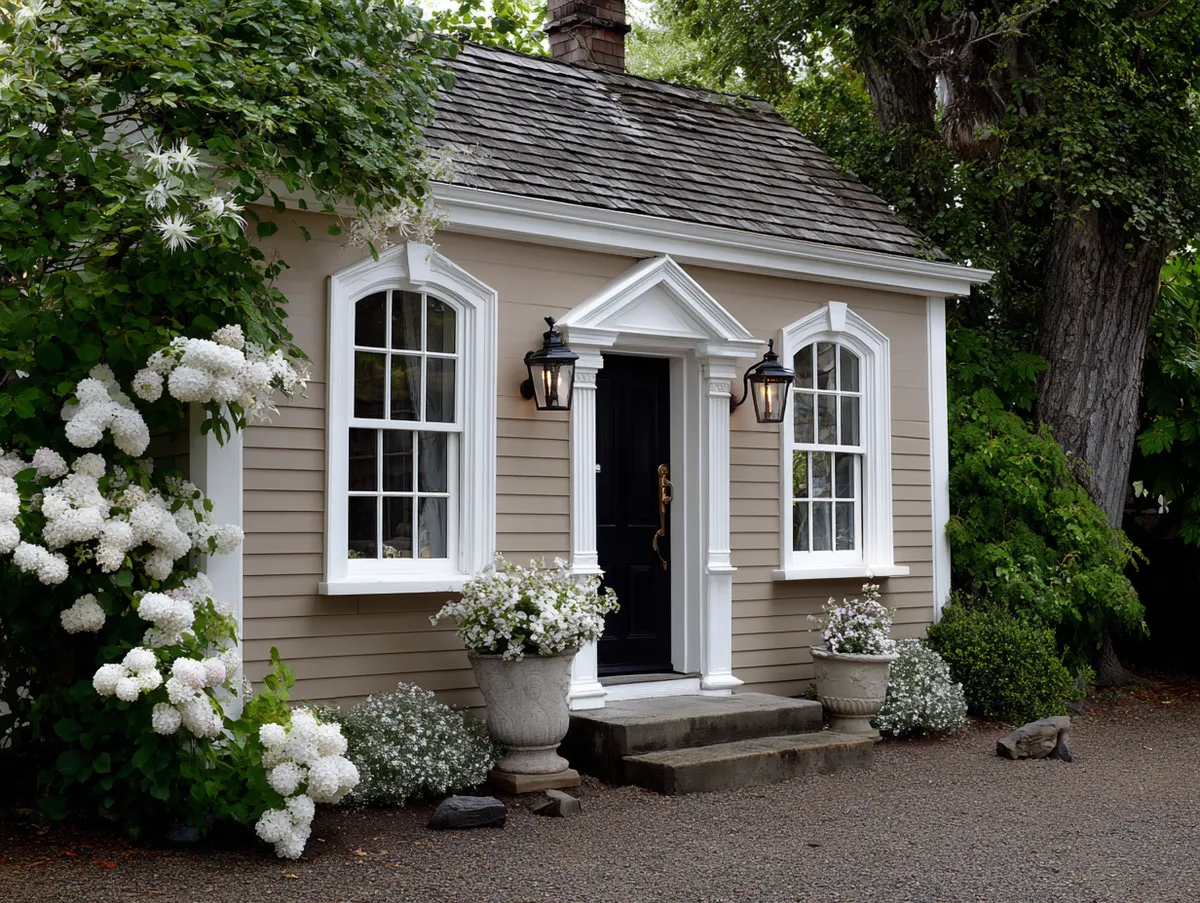

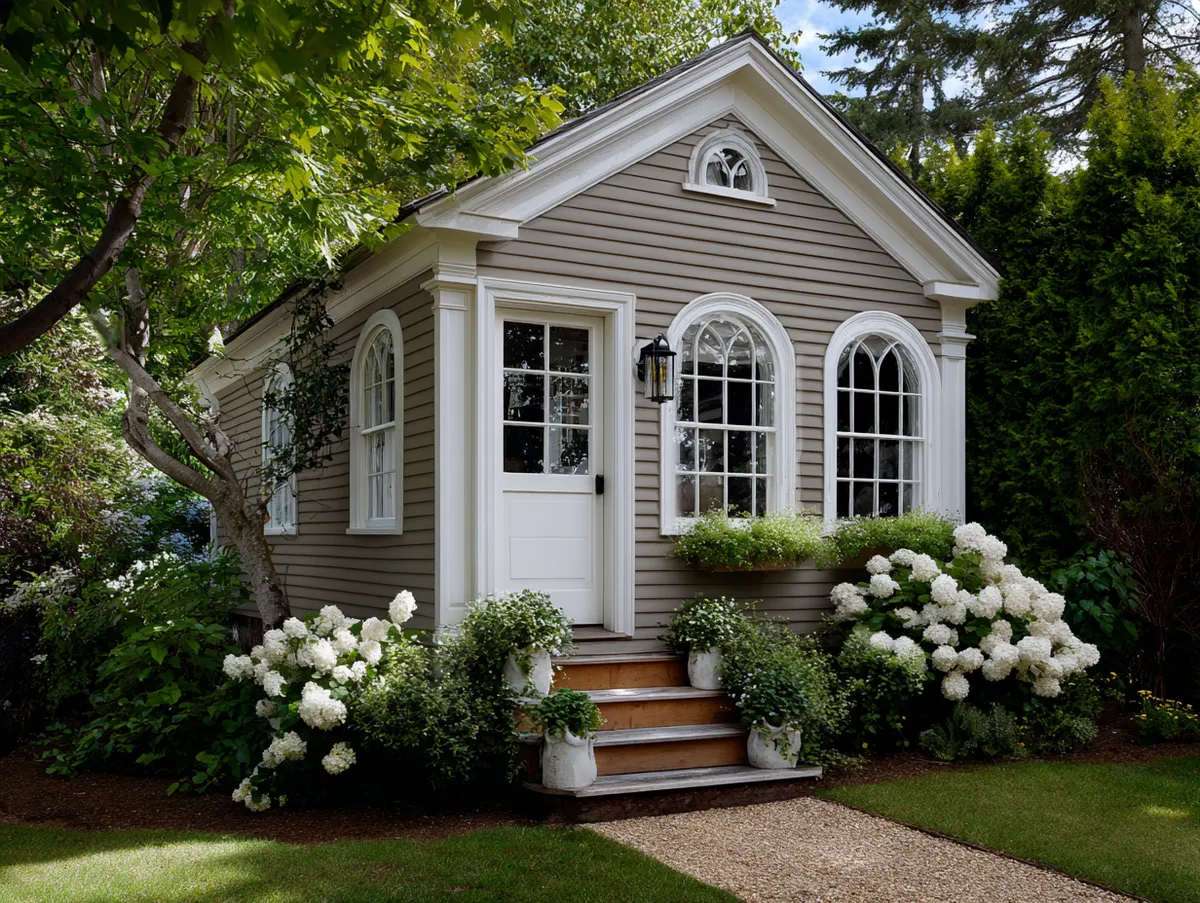
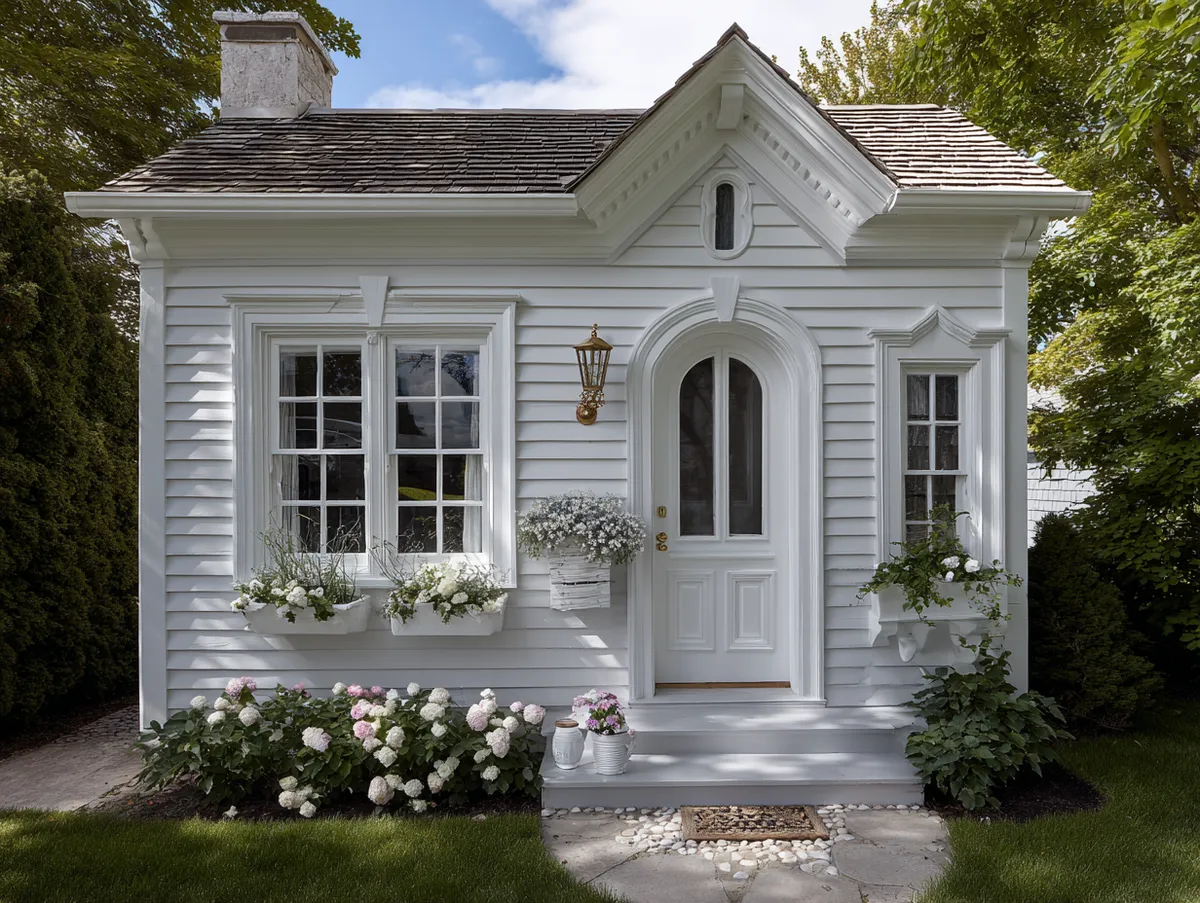




The photo also underlines the adaptability of colonial window trim. Even though it is typically associated with grand, symmetrical structures, here it is used in a smaller, asymmetrical cottage, demonstrating its versatile nature.
Additionally, the image showcases the contrast between the white window trim and the cottage’s darker paint color. This contrast draws attention to the windows and the trim’s beautiful detailing, creating a visually arresting exterior.
Furthermore, the photo shows how colonial window trim can contribute to a home’s curb appeal. Despite its simplicity, the cottage is made more appealing and characterful with the addition of the elaborate window trim, demonstrating the power of architectural details in enhancing a home’s appearance.
Finally, the photo highlights the durability of colonial window trim. Even in the context of a quaint cottage exposed to the elements, the window trim remains intact and aesthetically pleasing, testifying to its lasting appeal and resilience.
From the stately elegance of a Colonial Revival home to the charming simplicity of a cozy cottage, colonial window trim exterior proves its versatile design power. Its distinctive style, adaptability to diverse architectural contexts, and contribution to enhancing curb appeal make it a choice worth considering for any homeowner. Whether you’re aiming for a traditional or contemporary aesthetic, the colonial window trim exterior can add a touch of sophistication and uniqueness to your home.
